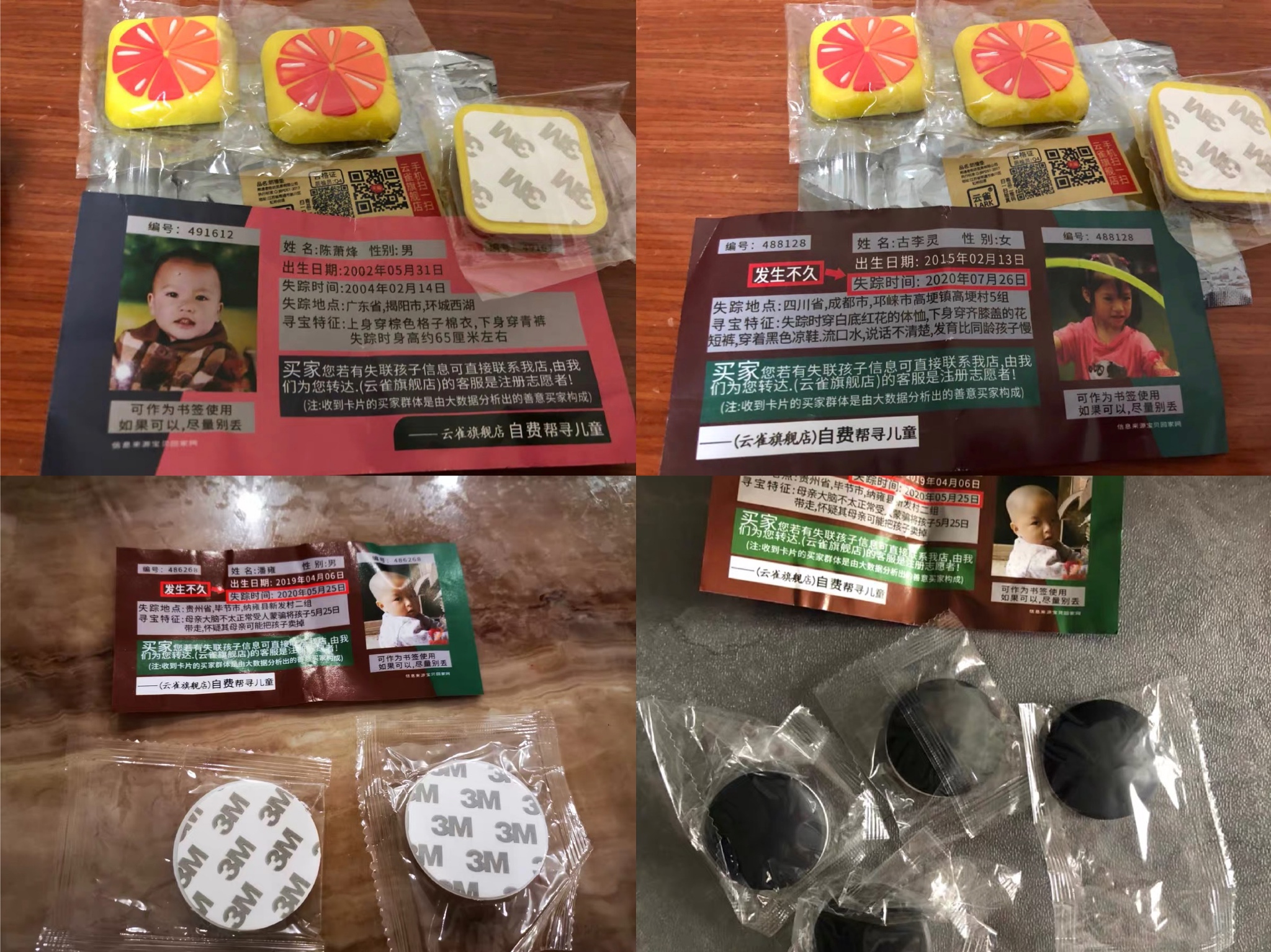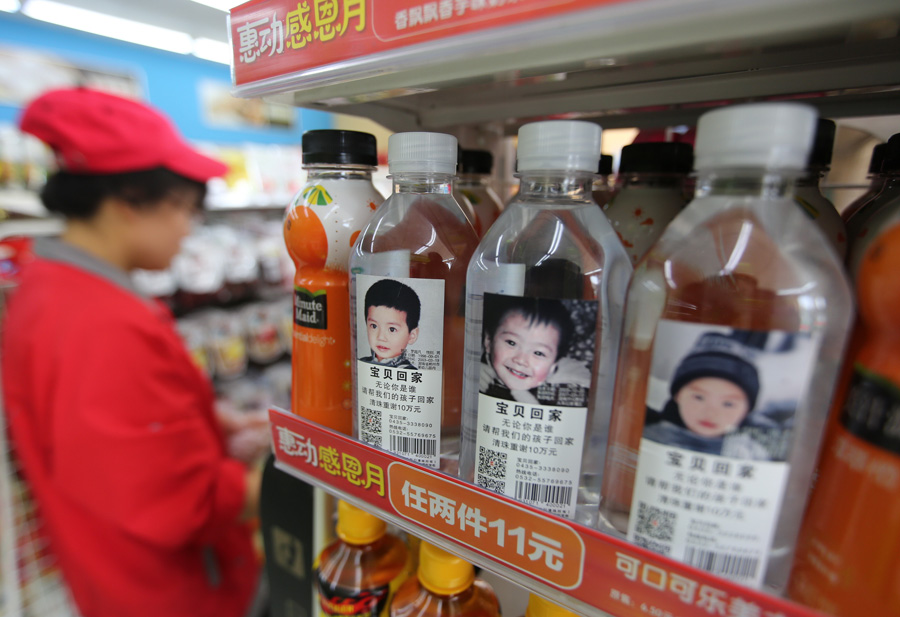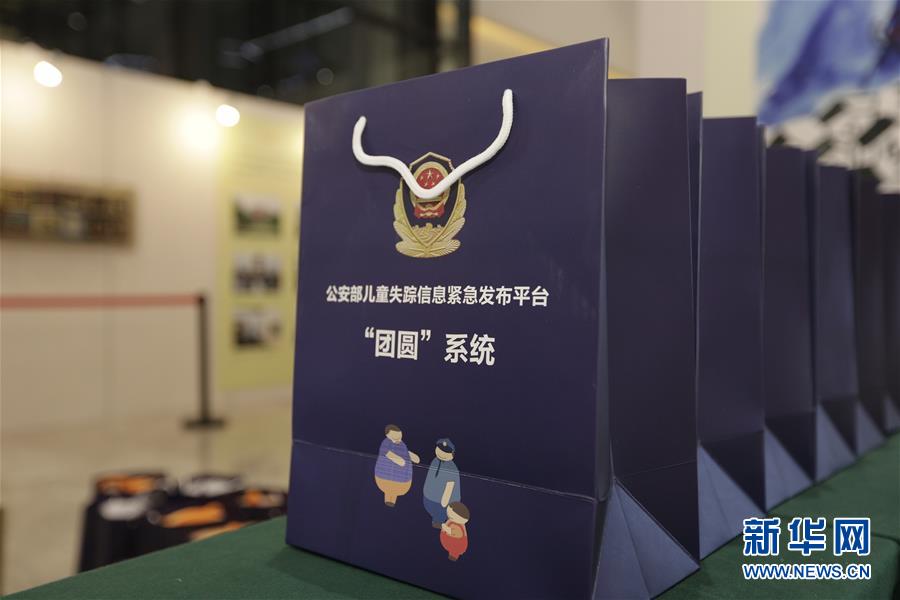Have you ever thought about opening a package, and finding out there's a small card with information about missing children inside? An owner of an online store on Taobao, one of China's online shopping giants, has been doing it for over a year in an attempt to bring more missing children home.

Small cards are placed inside the delivery packages. /CGTN
Small cards are placed inside the delivery packages. /CGTN
Mu Yang (pseudonym), an owner of a household supplies e-shop based in east China's Jiangsu and Zhejiang provinces, began printing small cards with information about missing children using his own money and placed them inside each delivery package he sent.
The move caught the eyes of netizens when one of his customers posted a photo of the card on social media and stirred much discussion.
In an interview with Mu, he said he worked with Baobeihuijia.com (Baby Come Home), a known non-profit online platform in China, which collects and provides information on missing children, to get the information.
To effectively run the service, Mu hired two employees, who were responsible for designing the cards, verifying the information about missing children and answering calls from customers.

A designer employed by the owner of the e-shop is producing cards with information about missing children. /CGTN
A designer employed by the owner of the e-shop is producing cards with information about missing children. /CGTN
Mu, who is in his thirties, has a son who is currently in kindergarten. He said the reason why he decided to do this was because he's a father.
Although they haven't been able to find any missing children, he said he would continue to do so. To improve the success rate, he adjusted his strategy by sending cards with information about the children who recently went missing.
Other companies have also adopted a similar strategy to locate missing children in China. A bottled water company in east China's Shandong Province cooperated with Baobeihuijia.com to print pictures of missing children on its packaging to help parents and authorities find them.

Bottles printed with pictures of missing children on its packing are placed on the shelves in a local shop in east China's Shandong Province. /China Daily
Bottles printed with pictures of missing children on its packing are placed on the shelves in a local shop in east China's Shandong Province. /China Daily
The estimated number of missing children in China varies. Some put the number at 70,000. However, according to reports, only a very small number – perhaps five percent or even less – are ever found and reunited with their families.
According to Baobeihuijia.com, more than 48,000 families had registered on the website to search for their missing children. Although the website cannot cover all missing children in China, the database depicts a big picture of this serious issue.
To tackle the child-trafficking issue in China, the government has stepped up efforts to deal with it by revising laws and setting up database to help search for the missing children.

The Public Security Ministry launched a web-based emergency alert system called Tuanyuan (Reunion) in May 2016. /Xinhua
The Public Security Ministry launched a web-based emergency alert system called Tuanyuan (Reunion) in May 2016. /Xinhua
In May 2016, the Public Security Ministry launched a Web-based emergency alert system called Tuanyuan (Reunion). As of November 20, 2019, the program shared information about 4,297 missing children. Of these, 4,217 have been traced back.